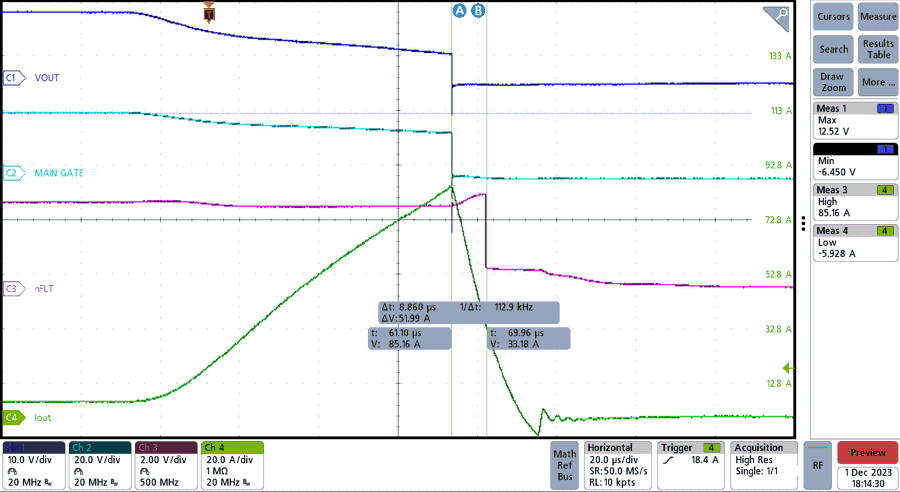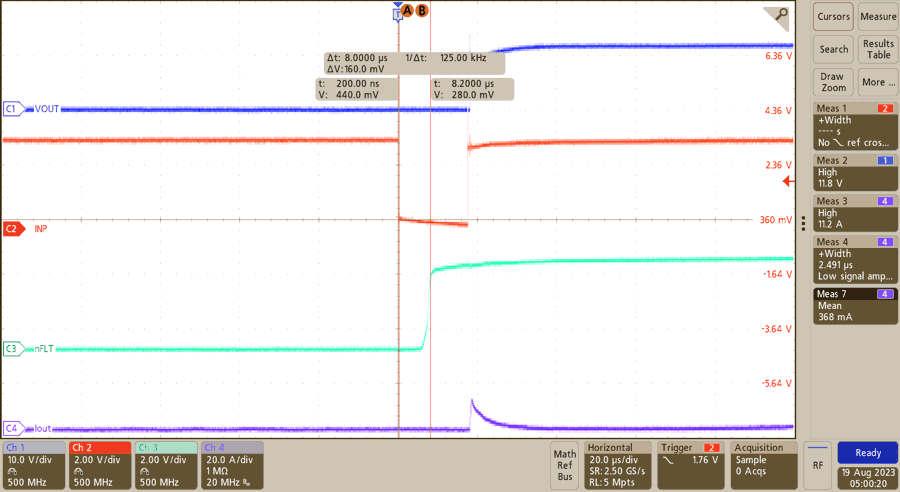TIDUF43 August 2024
- 1
- Description
- Resources
- Features
- Applications
- 6
- 1System Description
- 2System Overview
- 3System Design Theory
- 4Hardware, Software, Testing Requirements, and Test Results
- 5Design and Documentation Support
- 6About the Author
4.4.6 Short-Circuit Protection
For this test, the electronic load was turned on initially at 5A and set to constant resistance mode. Then, the "short" option was clicked on the electronic load to initiate a short-circuit event in the TPS1213-Q1. As shown in Figure 4-14, the current spikes up to about 85A before the TPS1213-Q1 turns off the main gate in less than 6μs. In this state, nFLT asserts low and the main gate remains latched off until S2 or S3 are pressed, which signals the MSPM0L1306-Q1 to toggle INP to attempt to clear the latch. If the latch is successfully cleared, nFLT asserts high and alerts the MCU that the fault has been cleared. Figure 4-15 shows an example of successfully recovering from a short-circuit event.
 Figure 4-14 Short-Circuit Event
Figure 4-14 Short-Circuit Event Figure 4-15 Clearing Short-Circuit
Latch
Figure 4-15 Clearing Short-Circuit
Latch